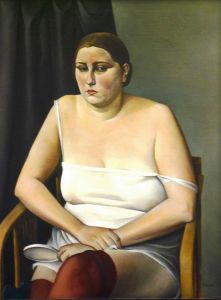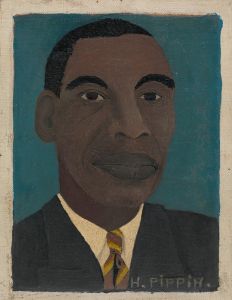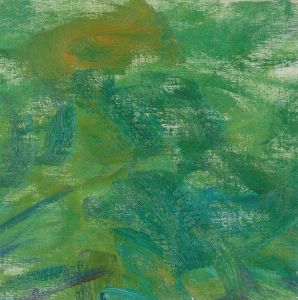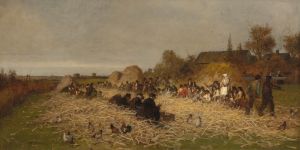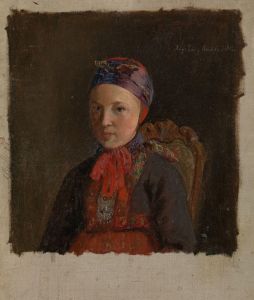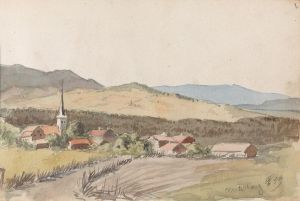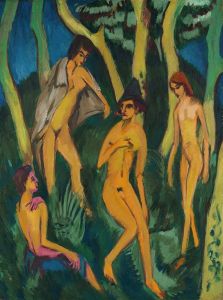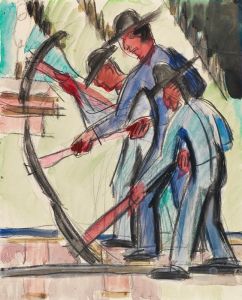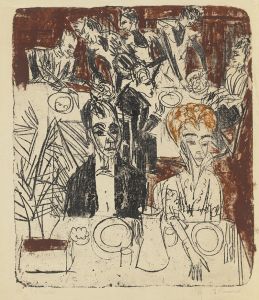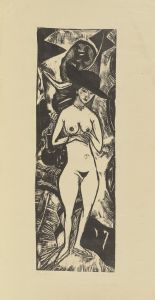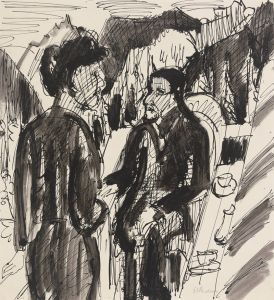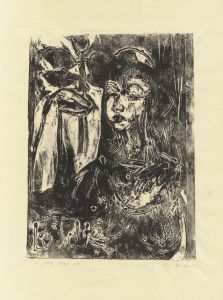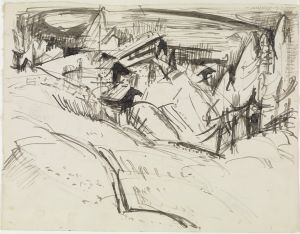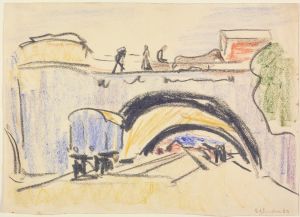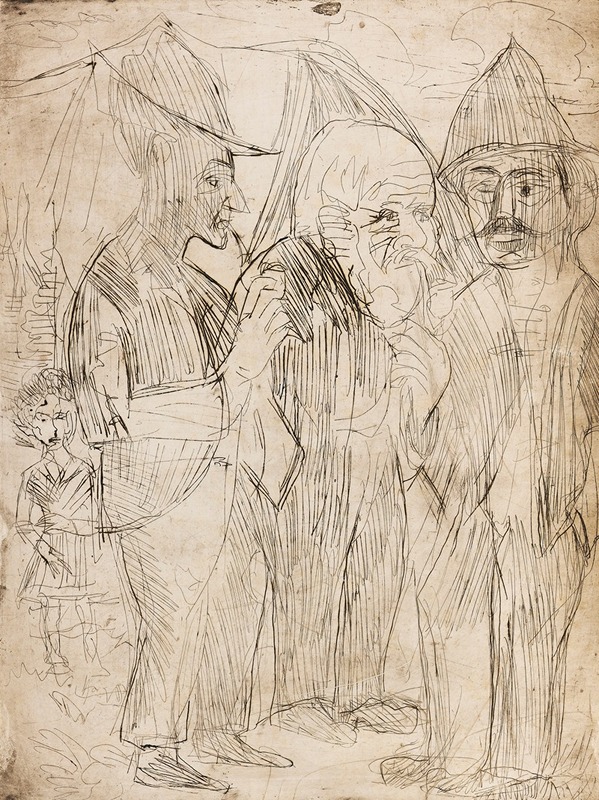
Drei Bauern
A hand-painted replica of Ernst Ludwig Kirchner’s masterpiece Drei Bauern, meticulously crafted by professional artists to capture the true essence of the original. Each piece is created with museum-quality canvas and rare mineral pigments, carefully painted by experienced artists with delicate brushstrokes and rich, layered colors to perfectly recreate the texture of the original artwork. Unlike machine-printed reproductions, this hand-painted version brings the painting to life, infused with the artist’s emotions and skill in every stroke. Whether for personal collection or home decoration, it instantly elevates the artistic atmosphere of any space.
"Drei Bauern" (Three Farmers) is a painting by the German expressionist artist Ernst Ludwig Kirchner, created in 1913. Kirchner was a founding member of the influential artist group Die Brücke (The Bridge), which played a crucial role in the development of Expressionism in early 20th-century Germany. The group sought to create a new artistic language that would bridge the gap between traditional academic art and modernist experimentation.
"Drei Bauern" exemplifies Kirchner's distinctive style, characterized by bold colors, dynamic compositions, and expressive brushwork. The painting depicts three farmers, rendered in a manner that emphasizes their physical presence and emotional intensity. The figures are portrayed with exaggerated features and angular forms, a hallmark of Kirchner's approach to capturing the human condition.
Kirchner's use of color in "Drei Bauern" is particularly noteworthy. He employs a vibrant palette, with strong contrasts between the figures and the background. This use of color not only enhances the emotional impact of the painting but also reflects the influence of Fauvism, a movement that Kirchner admired for its bold use of color and expressive potential.
The composition of "Drei Bauern" is dynamic and somewhat disorienting, with the figures seemingly caught in a moment of movement or tension. This sense of dynamism is further heightened by Kirchner's brushwork, which is vigorous and textured, adding a sense of immediacy and raw energy to the painting. The background, while less detailed than the figures, provides a sense of context and environment, suggesting a rural setting that aligns with the subject matter.
Kirchner's portrayal of the farmers in "Drei Bauern" can be seen as a reflection of his interest in the lives and struggles of ordinary people. This focus on everyday subjects was a common theme in the work of Die Brücke artists, who sought to capture the essence of contemporary life in their art. By depicting the farmers with such intensity and emotion, Kirchner elevates their status, presenting them as dignified and resilient individuals.
The painting also reflects Kirchner's broader concerns with the rapid industrialization and urbanization of Germany during this period. By choosing to depict rural subjects, Kirchner may have been expressing a sense of nostalgia for a simpler, more authentic way of life that was increasingly under threat. This theme of tension between tradition and modernity is a recurring motif in Kirchner's work and in the broader context of German Expressionism.
"Drei Bauern" is housed in the collection of the Brücke-Museum in Berlin, which is dedicated to the work of the Die Brücke artists. The museum holds an extensive collection of Kirchner's work, providing valuable insights into his artistic development and the broader context of the Expressionist movement.
In summary, "Drei Bauern" is a significant work within Ernst Ludwig Kirchner's oeuvre, showcasing his distinctive style and thematic concerns. Through its bold use of color, dynamic composition, and expressive portrayal of its subjects, the painting captures the essence of Kirchner's artistic vision and his contribution to the Expressionist movement.





